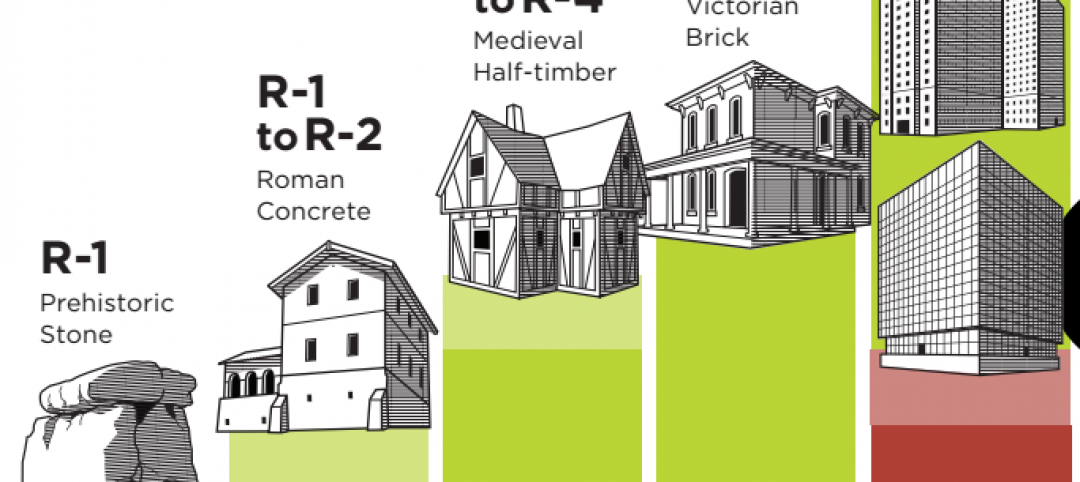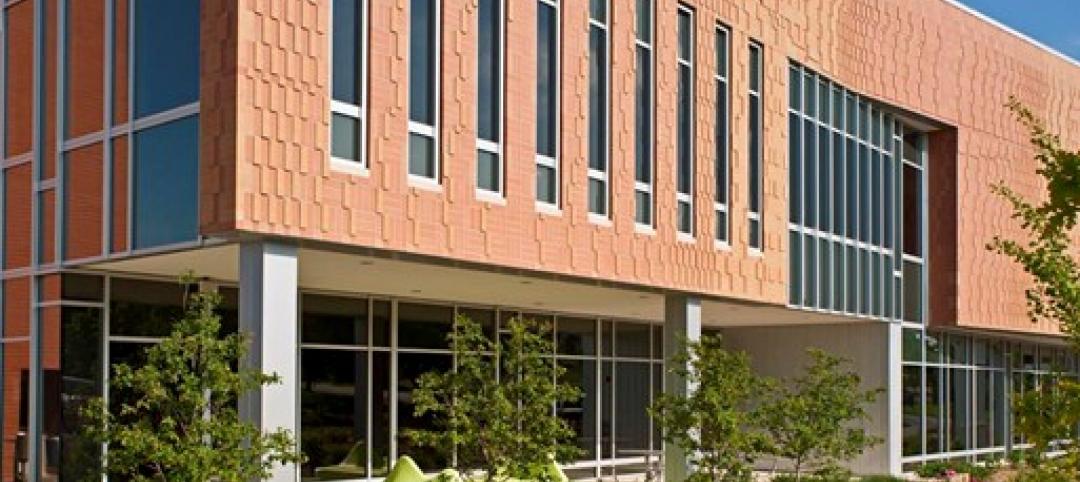Johns Hopkins Hospital operates a dense, urban medical campus in Baltimore with an outsize global reputation. Nestled amid the pioneering clinical and research facilities is the Nelson-Harvey Building, a 1970s-era modernist structure with narrow ribbon windows and long expanses of brick colored to match the nearby Halstead Building and the 1880s Billings Building, a campus landmark with its classic dome.
After opening a major new facility next door, the Zayed Bloomberg complex, the hospital began renovating existing facilities on its East Baltimore campus. The nine-story Nelson-Harvey was a candidate for an interior renovation.
After decades of wear, the hand-laid brick envelope of the Johns Hopkins nine-story Nelson/Harvey inpatient facility began failing. The architectural firms Wilmot Sanz and Ayers Saint Gross needed a solution that met two criteria: one, that is was lightweight enough to prevent any need for additional superstructure or foundation costs; and two, that the facility would be able to stay operational during the exterior renovation.
“Late in the game, during design development, the client determined that we should also address envelope issues,” said Dan McKelvey, an associate principal and building envelope expert with Ayers Saint Gross, describing the existing, hand laid brick façades with a concrete masonry unit (CMU) backup on structural steel. “There were problems including cracking and deflecting brick, and the window system was outdated. The building had no insulation in the wall system, either.”
Factory-applied foam insulation
SLENDERWALL® met the requirements. Its 28 lbs. per square foot specification and unique composite construction allowed for the re-cladding to take place without the removal of the old fascia. The 158 SLENDERWALL panels (27,164 sf) were designed with a factory-applied Endicott brick facing, maintaining continuity with the campus and the original 1970’s exterior.
Johns Hopkins also chose to include factory-applied closed-cell foam insulation and the proprietary H2Out advanced sealant rain screen system with leak detection. The addition of these options provided not only savings in time and on-site trades, but insurance against future air and water infiltrations, as well as continuous insulation adding significantly to the enclosure’s thermal performance and excellent acoustical STC ratings.
The project is being certified under Baltimore City’s Green Stars program, at a level equivalent to LEED Silver. This is the first healthcare project to seek certification under this program.
In March 2013, SMC began delivery to the contractor, Whiting-Turner. Completion of the cladding portion of the project concluded in June. The short schedule showcased the benefits of SLENDERWALL in reduced times and costs for production, shipping and installation, as well as decreasing the need for some on-site trades.
SLENDERWALL architectural precast concrete panel system uses proven technologies to connect a thin layer of fiber-reinforced architectural precast concrete with an interior steel-stud frame ready for drywall application to create a true composite exterior/interior wall. The panels are also available with optional factory-applied continuous closed-cell foam insulation and windows, offering savings in time and on-site labor.
Choosing these along with the proprietary H2Out advanced sealant system, may qualify a project for a no-moisture intrusion guarantee, giving a true one-call responsibility for the building envelope.
For more information:
Easi-Set Worldwide
1-800-547-4045
Fax 1-540-439-2541
info@easiset.com
www.SlenderWall.com
Related Stories
| Dec 28, 2014
Robots, drones, and printed buildings: The promise of automated construction
Building Teams across the globe are employing advanced robotics to simplify what is inherently a complex, messy process—construction.
| Jul 17, 2014
A harmful trade-off many U.S. green buildings make
The Urban Green Council addresses a concern that many "green" buildings in the U.S. have: poor insulation.
| Jul 7, 2014
7 emerging design trends in brick buildings
From wild architectural shapes to unique color blends and pattern arrangements, these projects demonstrate the design possibilities of brick.
| Feb 14, 2014
Scrap tires used to boost masonry blocks at Missouri University of S&T
Research could lead to blocks that use waste material and have seismic and insulating benefits.
| Feb 5, 2014
BIA Opens Entries for 25th Annual Brick in Architecture Awards
Entries open on February 10 for the Brick Industry Association's (BIA) Brick in Architecture Awards. Celebrating its silver anniversary, BIA's annual honors spotlight outstanding, innovative and sustainable architecture that incorporates clay brick products as the predominant exterior building or paving material.
| Jan 24, 2014
Structural concrete requirements under revision: ACI 318 standard
The American Concrete Institute (ACI), an organization whose mission is to develop and disseminate consensus-based knowledge on concrete and its uses, is finalizing a completely reorganized ACI 318-14: Building Code Requirements for Structural Concrete.
| Jan 17, 2014
The Starchitect of Oz: New Gehry building in Sydney celebrates topping out
The Dr. Chau Chak Wing Building at the University of Technology, Sydney, will mark Frank Gehry's debut project in the Australian metro.
| Jan 11, 2014
Getting to net-zero energy with brick masonry construction [AIA course]
When targeting net-zero energy performance, AEC professionals are advised to tackle energy demand first. This AIA course covers brick masonry's role in reducing energy consumption in buildings.
| Dec 10, 2013
16 great solutions for architects, engineers, and contractors
From a crowd-funded smart shovel to a why-didn’t-someone-do-this-sooner scheme for managing traffic in public restrooms, these ideas are noteworthy for creative problem-solving. Here are some of the most intriguing innovations the BD+C community has brought to our attention this year.
| Nov 27, 2013
Wonder walls: 13 choices for the building envelope
BD+C editors present a roundup of the latest technologies and applications in exterior wall systems, from a tapered metal wall installation in Oklahoma to a textured precast concrete solution in North Carolina.















